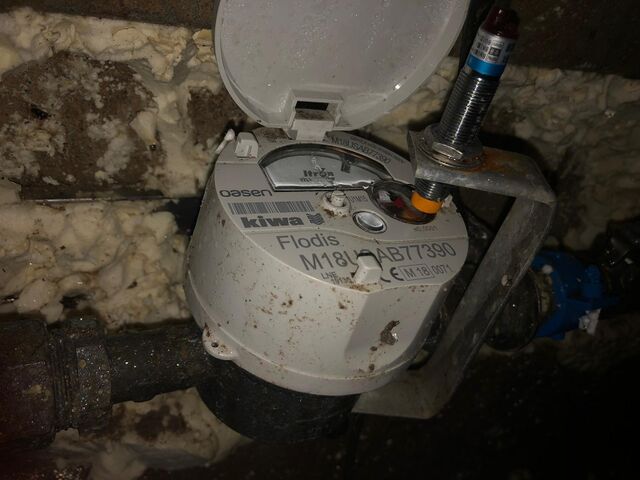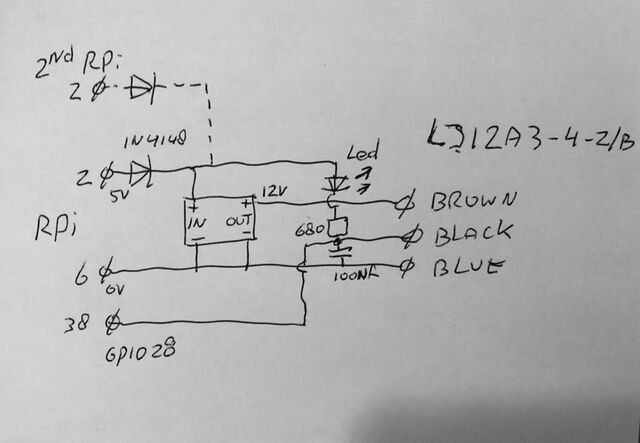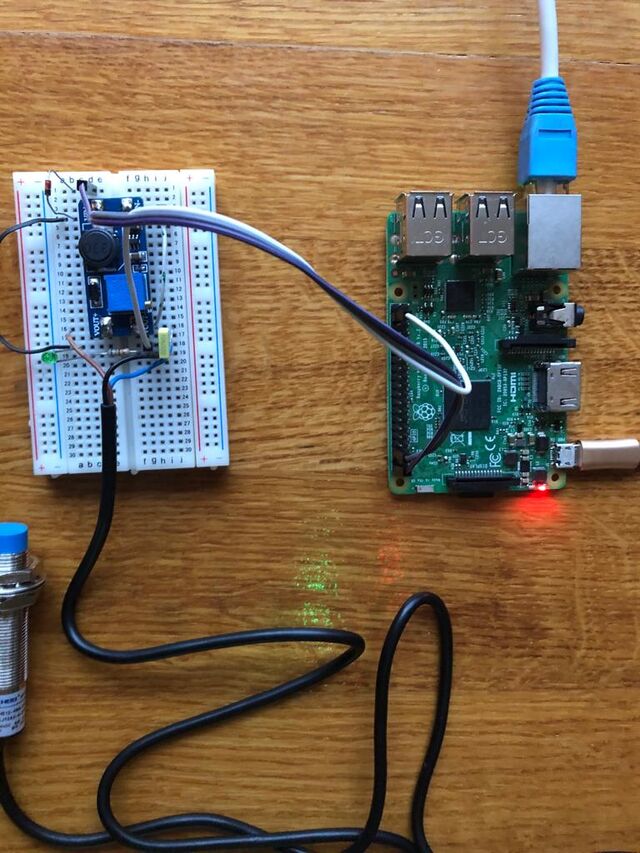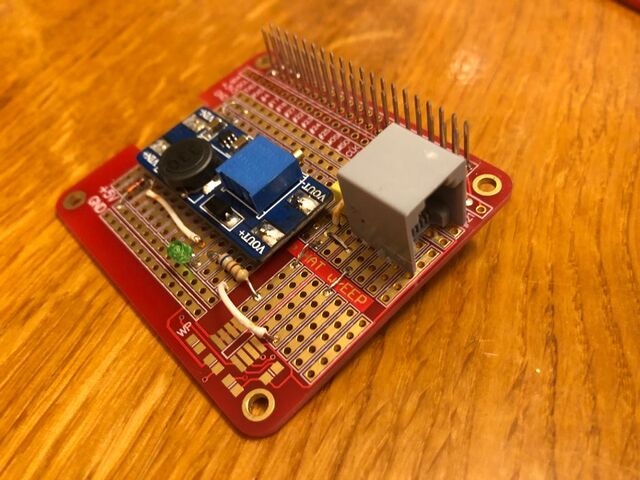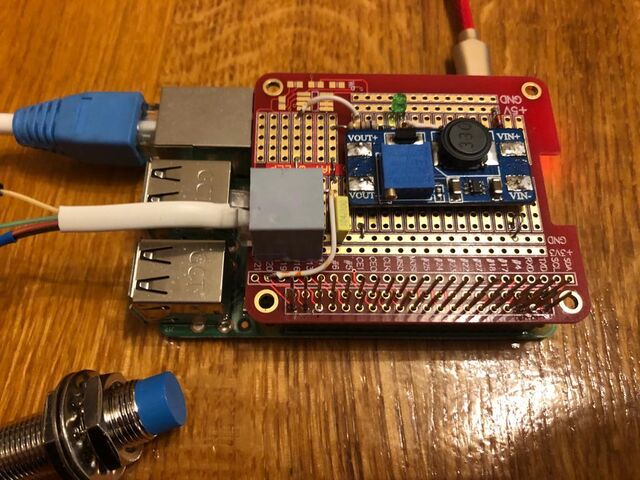RPiWaterMeter
Water usage mesurement with a Raspberry Pi
In my case I use Domoticz, but it also works with Home-Assist and other products.
It works with a magnetic sensor, which can be used because of the half-metal rotor of watermeters in my country (Netherlands)
For magnetic sensor I use the LJ12A3-4-Z/B from the well known company in China.
You can use most types but be sure to by the OC (Open-Collector) version, while most sensors use higher voltages than a Raspberry Pi.
The sensor should be placed on the side of the rotator, not in the middle.
With a piece of aluminium it's easy to mount on the meter:
Shematics:
The sensor needs 9-36 Volt, while a Raspberry Pi only can deliver 5 Volt.
I use an adjustable chopper board(also from China), adjusted as 12 Volt.
If you want the same Board it's called:
"MT3608 DC-DC Adjustable Boost Module Feed Converter Voltage Regulator Module 2A Max 2 V-24 V to 5 V-28 V"
The output is connected to one of the GPIO's of the Pi, which first should configured as input, in my case I use GPIO28 (pin38/BCM20).
The led will show if it works, for every pulse 1 liter water is detected.
I use a Raspberry Pi Cluster, so I can do a failover, pin 2,6 and 38 are also wired to a second Pi,
for the Power a diode is needed, for each Pi, while it's a bad idea to connect the power to multiple Pi's.
First tested it with an experiment board:
To test it on a pi you need the gpio command:
if not installed:
sudo apt-get update
sudo apt-get install wiringpi
change GPIO 28 (BCM=20 and pin=38) as input:
sudo /usr/local/bin/gpio export 20 in
Put this line somewhere in a startup file, so it will stay that way, after reboot,
best below in /etc/rc.local (without sudo)
to show the states:
sudo gpio readall
This is the result:
All welded on an experiment board, for the Rpi, with a long pin connector, so you can stack other boards.
I use a RJ11 connector to connect the sensor.
Complete mounted on the Pi:
